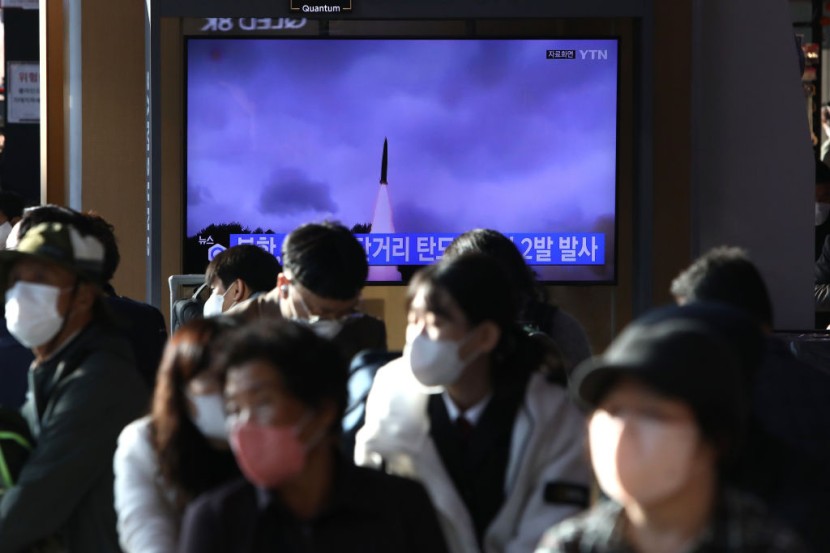
North Korea launched two short-range ballistic missiles Friday, its first in two weeks, as the US military warned Pyongyang that employing nuclear weapons would "end" the leadership of Kim Jong-un.
The two launches occurred at noon local time on Friday in the Tongchon area of the North's eastern coastal region, according to a statement released by Seoul's Joint Chiefs of Staff. It was reported that the maximum height reached by both missiles was 24 kilometers (approximately 230 kilometers; 140 miles) (15 miles), AP News reported.
The launches, which the statement calls "a grave provocation" that threatens peace in the region and goes against United Nations Security Council measures, were forcefully condemned by South Korea.
The US Indo-Pacific Command called the North Korean missile launch as evidence of the "destabilizing impact" of North Korea's covert nuclear and ballistic missile development.
#INDOPACOM Statement on #DPRK Missile Launch: "We are aware of the ballistic missile launches and are consulting closely with our allies and partners."
— U.S. Indo-Pacific Command (@INDOPACOM) October 28, 2022
Read more ⬇️https://t.co/4IxSUq7OfO
The Japanese Defense Ministry said that it detected the launches and that the type of missiles launched and the details of their flight path were still being examined, per ABC News.
The Foreign Ministry of South Korea reported that shortly after the launches, the country's senior nuclear envoy spoke by phone with his American and Japanese counterparts.The three agreed to increase trilateral coordination on addressing the North Korean nuclear threat while calling on it to cease missile tests and resume dialogue.
The simultaneous launches were the first North Korean ballistic missile tests since October 14 and occurred on the final day of South Korea's 12-day "Hoguk" field exercises, in which an undisclosed number of US forces participated.
South Korea Announces 'Vigilant Storm'
South Korea's Air Force announced on Friday that the country's airspace will be used for the Vigilant Storm exercise from October 31 to November 4, according to The Korea Herald.
There will be a total of 240 combat aircraft mobilized by Seoul and Washington.
The South Korean Air Force wants to send 140 aircraft, including stealth F-35As, F-15Ks, KF-16s, and KC-330 tankers.
Roughly a hundred planes, including F-35B stealth fighters, EA-18 electronic warfare planes, KC-135 tankers, and Lockheed U-2 spy planes, will be sent into action by the US Air Force.
The Vigilant Storm exercises will highlight the first teaming up of F-35A and F-35B stealth jets from South Korea and the US.
Pyongyang is enraged by the military exercises and explains the barrage of missile launches it has been conducting as "countermeasures" against an impending invasion.
Unparalleled Retaliation Awaits Pyongyang If It Pushes Nuclear Bomb Test
According to Al Jazeera, Seoul and Washington have frequently warned that Pyongyang may be close to conducting its first nuclear test since 2017. This comes after a series of North Korean missile launches.
Seoul recently warned North Korea may be planning to conduct numerous consecutive nuclear tests as part of leader Kim Jong Un's goal to create tactical nukes, smaller, battlefield-ready weapons.
Earlier today, President Yoon Suk-yeol of South Korea warned that North Korea was planning a seventh nuclear test.
If North Korea conducts a nuclear test, the United States, South Korea, and Japan have threatened an "unparalleled" retaliation.
In a brief statement, the United States Indo-Pacific Command called the North Korean missile launch "unlawful" and reaffirmed the US "ironclad" pledge to safeguard South Korea and Japan.








